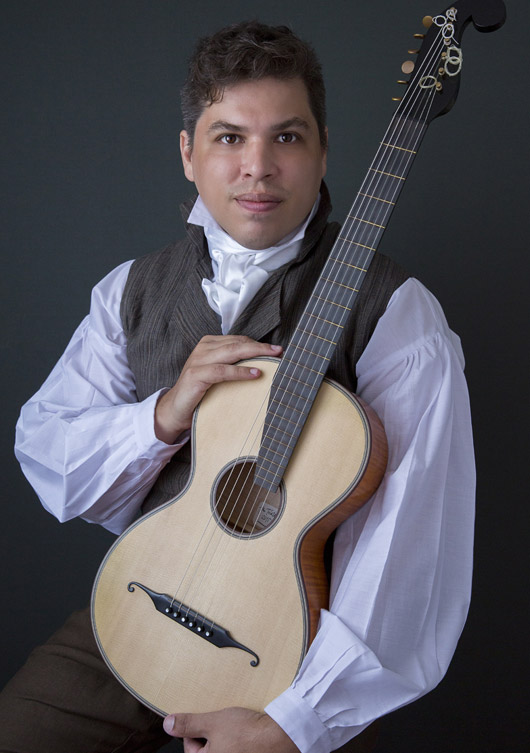
Romantic Guitar
The guitar enters Nineteenth Century as a newly reworked instrument. It has given up double-stringing courses, an arrangement used until the end of the Eighteenth Century. The availability of wound bass strings allowed for the expansion of the guitar’s lower by adding a sixth string. The upper register was increased by lengthening the fingerboard. Higher tension strings were used, and the resulting sound with stronger sounding fundamental frequencies was well-fitted to the needs of classical musical language.
We probably won’t be able to ascertain with certainty where this new form of guitar was born—it seems to have happened in several places in Europe at roughly the same time. One such place was Italian peninsula from which many Nineteenth-Century guitar virtuosos traveled to give concerts, compose music, and teach in cultural centers like Paris or Vienna. The guitar suddenly became a very fashionable instrument—it was played at homes or taken along when going for a walk. The guitar’s easy transportability and capability of chordal playing made it a favorite choice as accompaniment for voice or melodic instrument.
A great demand for new guitars was met by trained violin makers who often shifted their production to guitar making. One of the best Viennese luthiers was Johann Georg Stauffer, whose creative spirit touched both bowed and keyboard instruments alike through the invention of new instruments or modifying their forms, but his greatest achievement was guitar-making. His ideas included new types and shapes of guitars, geared tuning machines, and the key-adjustable neck, among others. Characteristic features of his guitar models directly affected guitar-making primarily in Central and Eastern Europe but certainly made their influence felt elsewhere, too. Many examples of the old Nineteenth-Century guitars are still in working, playable condition, and the sound of fine period instruments inspires the players to explore the long-neglected repertoire. The characteristic response of the period guitar model influences the player’s choice of fingering and even playing technique and musical phrasing. The old music sounds suddenly new and fresh.
Jan Tulacek